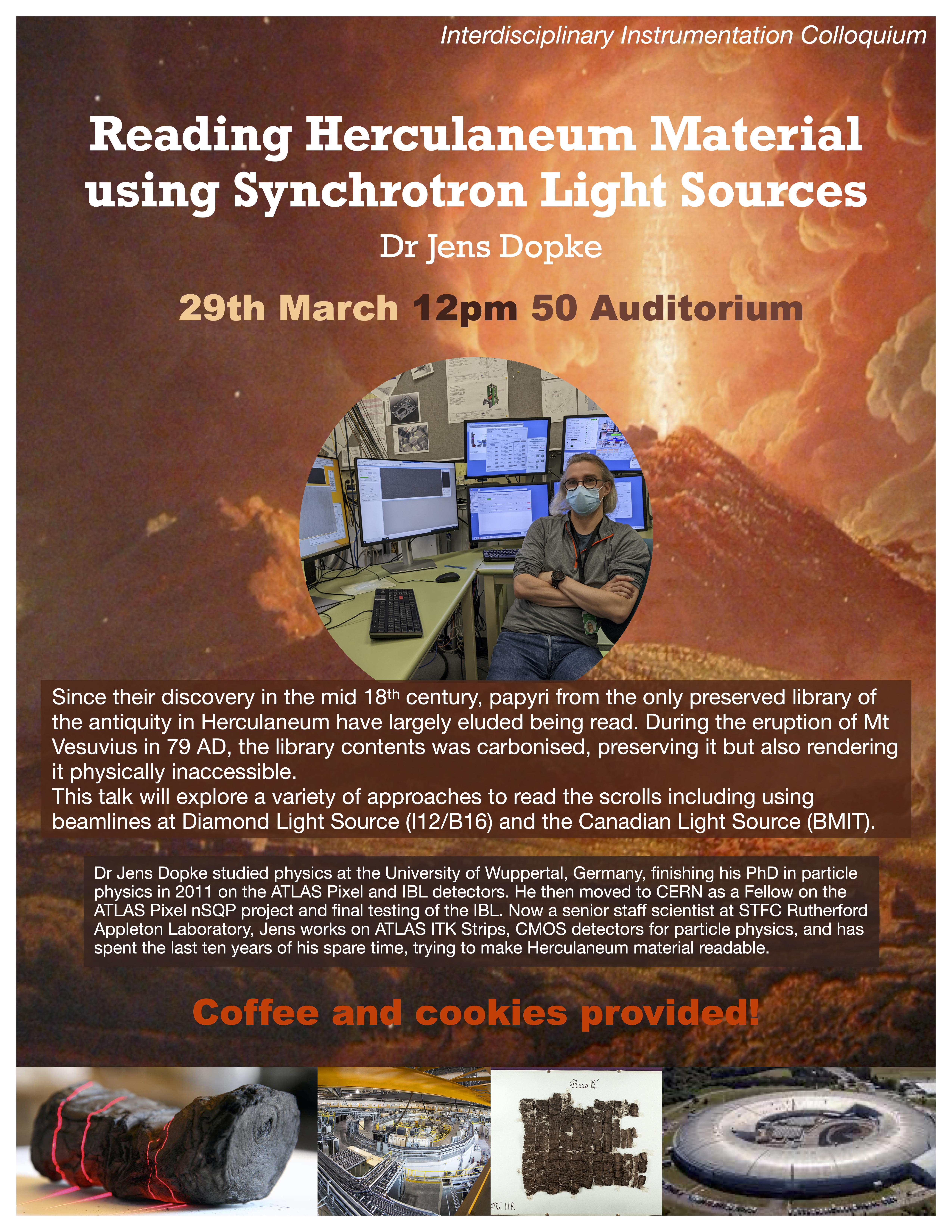Jens Dopke (RAL) Reading Herculaneum Material using Synchrotron Light Sources
→
US/Pacific
Auditorium (50)
Auditorium
50
, , ,
Description
NEW: Coffee and snacks provided!

Recording here (closed captions available):
Abstract
Since their discovery in the mid 18th century, papyri from the only preserved library of the antiquity in Herculaneum have largely eluded being read. During the eruption of Mt Vesuvius in 79 AD, the library contents was carbonised, preserving its content, but also rendering it physically inaccessible. Modern day technology is being thrown at this problem in various ways, often using Synchrotron light sources. Phase contrast CT, Machine Learning and x-ray fluorescence measurements are some of the examples, and I’ll try and cover some of these different approaches and their successes, including my very own ways of wanting to make this material readable using beamlines at Diamond Light Source (I12/B16) and the Canadian Light Source (BMIT). Please bring ideas, as this problem is far from being solved in any practical way.
Speaker bio
Dr Jens Dopke studied physics at the University of Wuppertal, Germany, finishing his PhD in particle physics in 2011, working on commissioning of the ATLAS Pixel Detector and design of the Insert-able B-Layer (IBL) readout system. He then moved to CERN working as a Fellow on the ATLAS Pixel new Service Quarter Panel (nSQP) project and final testing of the IBL. He is now a senior staff scientist at STFC Rutherford Appleton Laboratory, working on the future ITk Strip detector, CMOS detectors for particle physics and has spent the last ten years of his spare time, trying to make Herculaneum material readable.
Dr Jens Dopke studied physics at the University of Wuppertal, Germany, finishing his PhD in particle physics in 2011, working on commissioning of the ATLAS Pixel Detector and design of the Insert-able B-Layer (IBL) readout system. He then moved to CERN working as a Fellow on the ATLAS Pixel new Service Quarter Panel (nSQP) project and final testing of the IBL. He is now a senior staff scientist at STFC Rutherford Appleton Laboratory, working on the future ITk Strip detector, CMOS detectors for particle physics and has spent the last ten years of his spare time, trying to make Herculaneum material readable.
Organizers
The agenda of this meeting is empty